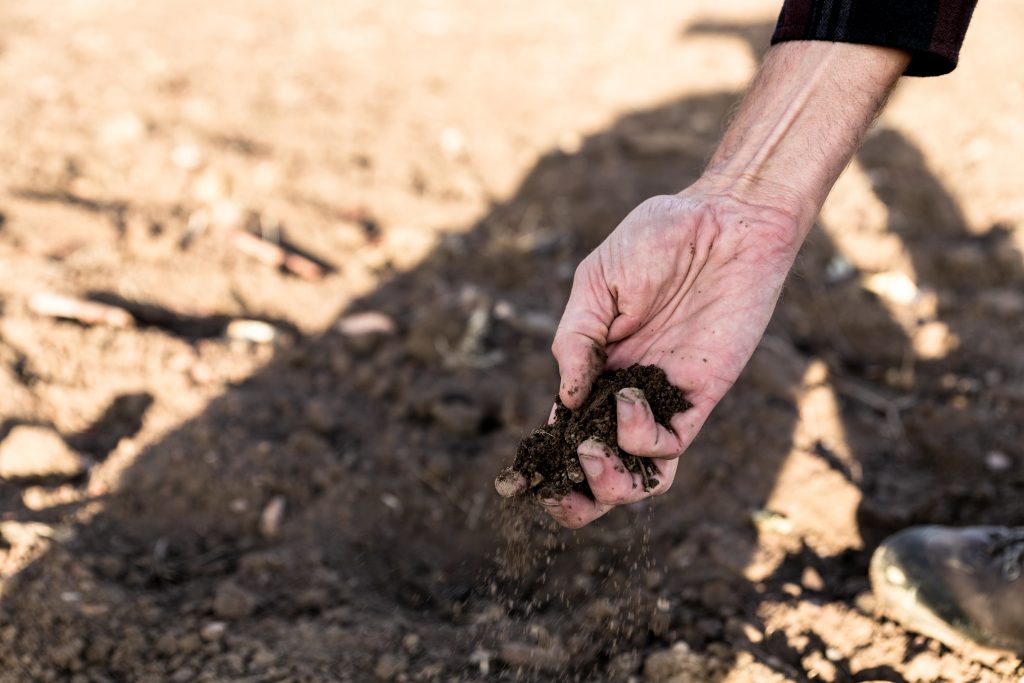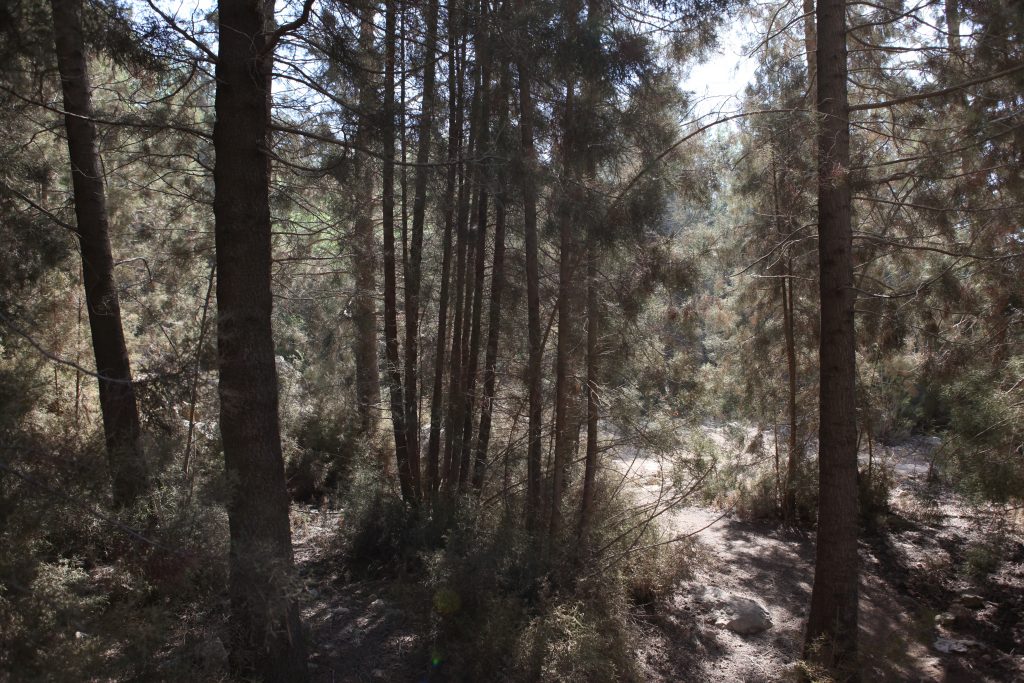Israeli pine trees are dying of thirst
September 27, 2020Intensifying droughts and severe heat are beginning to devastate the country's pine populations. A new research study examined which pine trees could be more resistant to the new climate reality
In early September, Israel saw an extreme and unusual heatwave with some areas reporting record temperatures. The Meteorological Service measured 42.3 degrees Celsius in Jerusalem, 46.6 degrees in Ayelet Hashahar in the north of the country, and 47 degrees in Kfar Blum, also in northern Israel.
Researchers believe that heatwaves and other extreme weather events will become more frequent in the wake of the climate crisis.
As humans, we have various means of dealing with intense heat and dryness, such as air conditioning or immediate water access. However, plants do not have the luxury of escaping extreme temperatures. In fact, the climate crisis is expected to negatively affect the growth, productivity, and survival of various plant species throughout the world and in Israel.
“We anticipate a decrease in precipitation during the winter and fall seasons as well as greater time intervals between one rain event and another,” says Prof. Marcelo Sternberg, head of the Plant Ecology Laboratory at the Tel Aviv University’s School of Plant Sciences and Food Security. “The Sequence of rainfall events is of great importance in everything related to the process of germination of plants. After the first rain in the fall, the seeds that have been in the soil all summer begin to germinate. If no more rain follows after a reasonable period, all those sprouted plants will die.”

Cloning trees
Also, in the Jerusalem pine (known as Pinus halepensis or Aleppo pine), a trademark of the Israeli landscape, the effects of climate change have become evident. Growing pine tree mortality in recent years has been attributed to an increase in droughts. In a study conducted at the Faculty of Agriculture of the Hebrew University, in collaboration with Keren Kayemet LeYisrael – the Jewish National Fund (KKL-JNF), the researchers tried to isolate Jerusalem pine cuttings (a part detached from the mother plant that grows branches and leaves) in an attempt to increase the environmental resilience of trees planted in the future.
“In an extensive survey conducted by KKL-JNF, it was found that about 30 percent of the Jerusalem pine have died in the country’s various forests,” explains Prof. Menachem Moshelion of the Institute of Plant Sciences and Genetics in Agriculture at the Faculty of Agriculture at the Hebrew University.
“Because mortality went up during times of drought, our working assumption was that climate change and intensifying droughts were what increased the mortality of the trees. We wanted to test how this issue could be dealt with and how damage could be reduced.”
In a study by Moshelion and his research students Hadas Regev and Roni Bornstein, the relation between the sources of the various seeds and their resistance to drought were examined. To this end, the researchers selected 12 different types of seeds, most of them from Greece and Israel.
Those seeds were then planted in a greenhouse, and the plants that grew from them were connected to a computerized system called Plant Ditech. With this technology, the researchers were able to control the environmental conditions for each plant, including the amount of nutrients, water, salinity, and more. Plant Ditech also provides real-time data on various plant parameters.
“With the help of this system, we can measure what the changes in the environment are and how the plant reacts to them,” says Moshelion.
“Among other things, we tested how much water evaporates from each plant (transpiration). This is an important parameter because the more water a plant transpires, the faster it grows. Thus, it will also be more sensitive to drought conditions because it will quickly finish its water resources and will have to wait longer until the next rain.”
“We found that no matter what seed population we worked with, the variance within that population was enormous and reached up to 150 percent. Some plants lost 100 ml per day, and others lost 1,500 ml. Therefore, we concluded that it might not help to choose a particular gene source for planting in the forests.”

Wasteful plants and conservative plants
Next, the researchers took cuttings from the plants grown in the greenhouse and planted them in a field. “We took fragments of one plant and created more plants from it genetically identical to the mother plant. The difference is that this time we already knew what their physiological profile was. We knew which of them lose a lot of water and which of them don’t. Then we divided them into groups of ‘wasteful’ and ‘conservative’ and took them out into the field. We planted plants from both groups in several areas of the country, with different environmental conditions, in order to neutralize the genetic effect and only have the environmental effect.”
According to Moshelion, in the first year, all the plants that grew fast and transpired a lot in the controlled greenhouse conditions showed beautiful growth in the field (measured by the height and thickness of the stem), and plants that lost little water grew slowly.
“In the second year, the correlation went down, and in the third, it went down even more,” he says. “We found that environmental conditions probably cause faster stress in those plants that grow a lot (which are also the ones that grow fast) because they finish their water very quickly. However, those that grew slowly and transpired water continued to grow over time. All the differences we saw in the greenhouse were reduced in the field, which strengthened our conclusion – good control of the water regime will improve the plant’s ability to survive.”

Genetic diversity is the key
During the experiment, Moshelion and his team were able to select plants that have the ability to cope with dry conditions and created clones from them – cuttings with the same genetic material, which allowed them, like the mother plant, to survive the dry conditions.
But is the practice of cloning a sensible approach to forestry in general and the conditions of the land in particular? According to Moshelion, most likely not – large systems with plants from the same genetic source can collapse quicker as the susceptibility of cuttings to a specific disease or a new pest may reach and destroy the entire population.
“The problem with cuttings is the genetic identity of the mother plant,” explains Moshelion.
“Diversity is the evolutionary basis that ensures the population’s survival and its adaptation to changing conditions.”
“There was an incidence in the Judean mountains, some time back, where a fungus invaded and killed planted pine trees that all had the same genetic source material,” says Sternberg. Genetic diversity allows the pines to deal with a potential disease, a strain, or an insect attack. With a higher genetic diversity, there will most likely always be one plant with a higher tolerance to drought conditions. The same plant that is genetically different from the other plants will be able to continue to survive and propagate,” he adds.
According to Moshelion, contrary to popular belief, the optimal way of cultivating forest trees and create genetically stable seeds is still a long way off. Simultaneously, working on tree clones is challenging, and more work and research has to be done in that field.
The best practice may be an initial sorting of physiological-genetic implants already in the KKL-JNF nurseries, in order to decide where it is more appropriate to plant each seedling and maximize its chances of survival in the field. “Although an ideal solution has not yet been found, I foresee a good future, but it will take a few more years of research,” says Moshelion.
So what is the solution we have to offer the trees, which are so vital to us in the fight against climate change?
“We do not know enough about the unique climatic conditions of our region – both at sea and on land. There are very few studies on this in Israel because of funding difficulties. Most of the information that comes to us today is from studies abroad.
“Climate change needs to be a priority for decision-makers and policymakers, so that we can begin to explore and deal with all those changes along the way, unfortunately, they are not there today,” Sternberg concludes.
This ZAVIT article was also published in The Jewish Journal on 09/22/2020.







